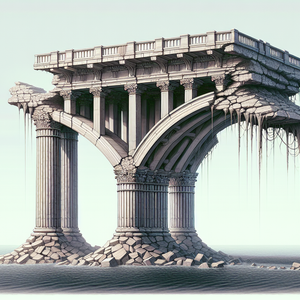The Art of Storytelling: Careers Behind the Scenes

The magic of storytelling unfolds through a complex tapestry of contributions, each role bringing its own unique expertise to the table. Let’s delve into some of these essential careers.
Script Supervisors: The Guardians of Continuity
Script supervisors are the meticulous architects of narrative continuity. Their primary responsibility is to ensure that every scene aligns with the established storyline, maintaining consistency in dialogue, actions, and visual details. For instance, if a character is seen drinking from a red cup in one scene, the script supervisor will ensure that every subsequent shot reflects that same detail. This diligence not only prevents continuity errors but also preserves the viewer's immersion in the narrative, allowing them to fully engage with the story without distractions.
Sound Designers: Crafting the Auditory Experience
Often overlooked, sound designers play a crucial role in shaping the emotional landscape of a story. They create an array of sound elements—from ambient noises that ground the setting to specific sound effects that punctuate critical moments. For example, in a horror series, the unsettling creaks of a door or the whispering winds can amplify tension, drawing viewers deeper into the story. The work of sound designers is pivotal; their creations evoke feelings, set the tone, and guide audience reactions, often making sound as impactful as the visuals on screen.
Graphic Artists: Visual Storytellers
Graphic artists are the visual architects of storytelling, responsible for creating compelling images that enhance the narrative. Whether designing promotional materials or crafting the intricate backgrounds of animated series, their contributions are vital to the overall aesthetic. Consider the animated series "Big Mouth," where graphic artists not only develop distinctive character designs but also create vibrant environments that resonate with audiences. Their work is integral in conveying themes and emotions through visual storytelling techniques, making the narrative more accessible and engaging.
Skills Required for Success
Despite their diverse roles, professionals in these behind-the-scenes careers share essential skills that contribute to their success: Attention to Detail: In storytelling, every detail matters. Script supervisors ensure narrative consistency, while sound designers carefully select or create sounds that enhance the experience. This meticulous attention helps maintain the integrity of the story being told. Creativity and Innovation: The ability to think creatively is invaluable across these roles. Graphic artists, for instance, must innovate continuously, developing unique visual styles that captivate audiences and set their work apart. Collaboration and Communication: Successful storytelling is a team effort. All these professionals must work closely with directors, producers, and other departments, ensuring that the creative vision is shared and effectively communicated. This collaboration allows for a cohesive narrative that resonates with viewers.
Supporting Examples
Numerous successful productions have showcased the indispensable contributions of these behind-the-scenes professionals. The highly acclaimed Netflix series "Stranger Things" exemplifies the power of sound design. Its atmospheric soundscapes have become emblematic of the series, enhancing the nostalgic yet eerie vibe that captivates audiences. The script supervisors' careful management of timelines and character arcs has been crucial in sustaining the show’s complex storytelling. Additionally, "Big Mouth" serves as a testament to the creativity of graphic artists. Their dynamic character designs and vibrant environments not only attract viewers but also reinforce the show’s themes of adolescence and self-discovery, making it both entertaining and relatable.
As the storytelling landscape continues to evolve, recognizing the importance of behind-the-scenes roles is essential. The collaborative nature of storytelling requires diverse skills and immense dedication from many individuals who often remain in the shadows. By acknowledging the contributions of script supervisors, sound designers, graphic artists, and others, we gain a deeper appreciation for the craft of storytelling in the streaming era. As viewers, we are not merely consuming content; we are partaking in a collective experience shaped by the hard work and creativity of countless professionals. Through their passion and expertise, these unsung heroes ensure that every narrative told on platforms like Netflix resonates and leaves a lasting impact on audiences worldwide.
Script Supervisor
Major film studios, television networks, and independent production companies
Core Responsibilities
Maintain continuity and consistency of script elements across all scenes, including dialogue and action.
Create detailed notes and reports for each shooting day, documenting any changes or deviations from the script.
Collaborate closely with directors and editors to ensure narrative flow and alignment with the creative vision.
Required Skills
Exceptional attention to detail and organizational skills.
Strong communication abilities to convey information effectively to the production team.
Familiarity with script formatting and film production processes.
Sound Designer
Film production companies, television studios, and game development studios
Core Responsibilities
Design and implement soundscapes that enhance the mood and emotional tone of scenes, using both original and library sounds.
Collaborate with directors and editors to align sound design with visual storytelling and pacing.
Conduct sound mixing and editing for final audio tracks, ensuring clarity and impact.
Required Skills
Proficiency in audio editing software (e.g., Pro Tools, Adobe Audition).
Creative sound design techniques, including Foley artistry and sound layering.
Strong understanding of acoustic principles and sound psychology.
Graphic Artist (Animation)
Animation studios, advertising agencies, and digital media companies
Core Responsibilities
Develop character designs and backgrounds that align with the narrative style and themes of animated projects.
Create promotional materials, including posters and social media graphics, to enhance audience engagement.
Collaborate with animators and directors to ensure visual consistency throughout the animation process.
Required Skills
Proficiency in graphic design software (e.g., Adobe Illustrator, Photoshop).
Strong illustration skills with a focus on character development and environment design.
Ability to work collaboratively in a fast-paced creative environment.
Production Designer
Film studios, television networks, and theater companies
Core Responsibilities
Develop the overall visual concept of a film or television production, including sets, locations, and props.
Collaborate with directors and cinematographers to create visual harmony between the story and its environment.
Oversee the construction and decoration of sets, ensuring that all elements reflect the intended aesthetic and period.
Required Skills
Strong artistic vision and knowledge of design principles.
Excellent project management and leadership skills to coordinate various departments.
Familiarity with architectural and interior design concepts.
Film Editor
Film and television production companies, post-production houses, and streaming services
Core Responsibilities
Assemble recorded footage into a coherent story, ensuring pacing, rhythm, and continuity align with the director's vision.
Collaborate with sound designers and colorists to finalize the film's audio and visual elements.
Provide creative input during the editing process to enhance the narrative and emotional impact.
Required Skills
Proficiency in editing software (e.g., Avid Media Composer, Final Cut Pro).
Strong storytelling skills and an understanding of narrative structure.
Ability to work under tight deadlines and manage multiple projects simultaneously.


